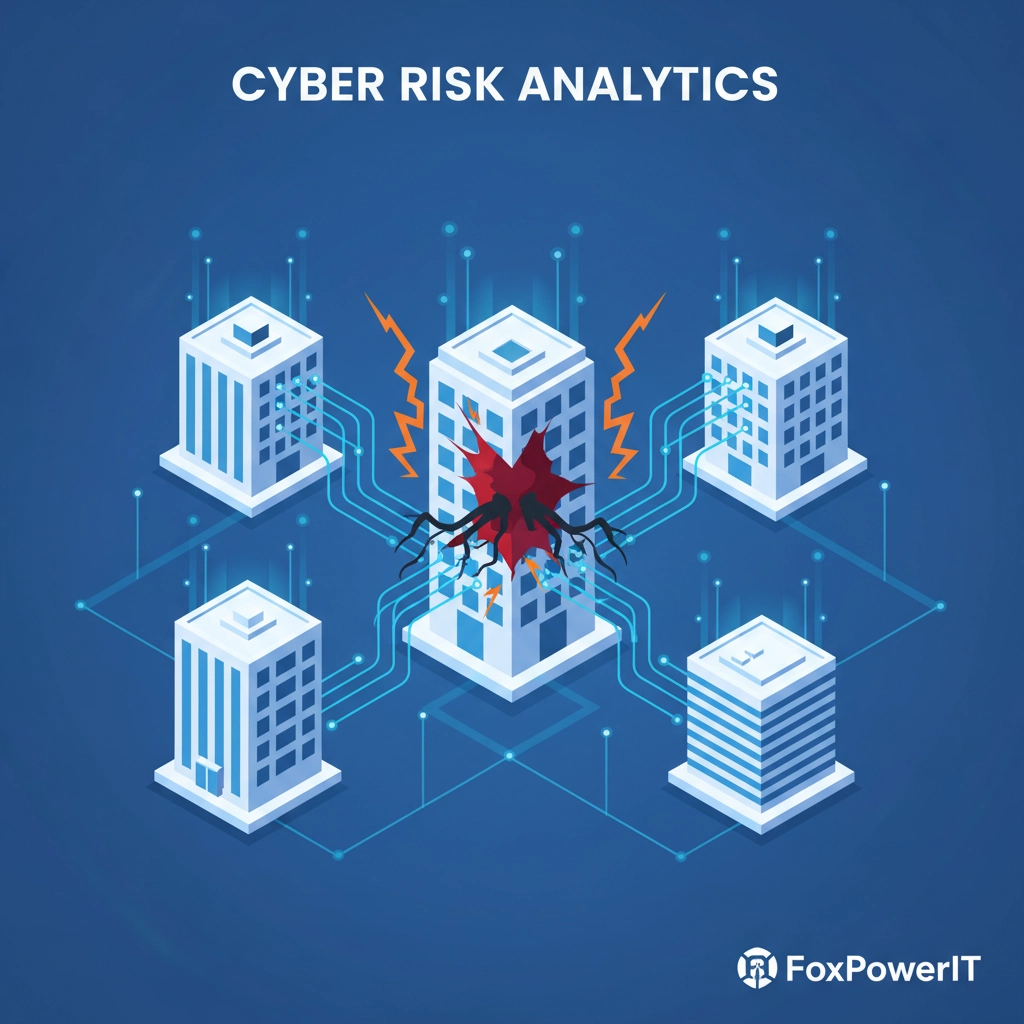Picture this: You've spent months building a fortress around your business data. Firewalls are humming, passwords are strong, and your team knows not to click suspicious links. Then one Tuesday morning, you get a call that stops your heart cold: your most trusted software vendor got breached, and the hackers just walked through their backdoor into your systems.
Sound like a nightmare? It's becoming reality for small businesses everywhere.
The Backdoor Problem Nobody's Talking About
Here's what most small business owners don't realize: cybercriminals aren't breaking down your front door anymore. They're sneaking in through the back: via the software, services, and suppliers you trust every day.
The numbers tell a sobering story. Supply chain cyberattacks in the U.S. affected 2,769 entities in 2023, representing a 58% increase from the previous year. Even more alarming? About 60% of small business breaches now start somewhere in the supply chain, not from direct attacks on your systems.

Think about it: every vendor with access to your data, every software-as-a-service tool your team uses, every contractor who logs into your network: they're all potential entry points. And unlike your own security measures, you have limited control over theirs.
The challenge for small businesses is unique. You need the flexibility and cost-effectiveness that comes from working with multiple vendors, but you often lack the resources that big enterprises use to vet and monitor every relationship.
The Smart Defense Strategy
The goal isn't to eliminate all risk: that's impossible. Instead, you want to create what security experts call "meaningful friction." Make it expensive and difficult enough for attackers to exploit your supply chain that they move on to easier targets.
This approach works because cybercriminals, like any business, follow the path of least resistance. If your vendor relationships are well-secured and monitored, hackers will typically pivot to softer targets rather than invest more time and resources.
Here's your practical five-step framework:
Step 1: Map Your Digital Ecosystem
Start by creating a living inventory of every vendor, supplier, and service provider that has access to your systems or data. Don't just think about the obvious ones: include:
- Software vendors and SaaS platforms
- IT service providers and consultants
- Cloud storage and backup services
- Payment processors
- Marketing and analytics platforms
- Any contractor with remote access
For each relationship, document what type of access they have and what sensitive data they can reach. This mapping exercise often surprises business owners: most have more vendor relationships than they realize.

Step 2: Risk-Rank Your Relationships
Not all vendor relationships carry equal risk. Classify each vendor based on two key factors:
Access Level: What can they see and touch in your systems?
- High: Full system access, customer data, financial records
- Medium: Limited system access, employee data
- Low: No direct access, minimal data exposure
Security History: How mature are their security practices?
- Review their security certifications (SOC 2, ISO 27001, etc.)
- Ask about their incident response procedures
- Check if they've had public breaches in the past
Focus your strongest security requirements on high-access vendors with questionable security maturity.
Step 3: Implement Vendor Accountability
Make security non-negotiable in your vendor contracts. This isn't just paperwork: it's your legal and operational protection. Every contract should include:
- Security certification requirements: Vendors must provide current security audit results
- Multi-factor authentication mandates: All vendor access requires MFA
- Breach notification timelines: Vendors must notify you within 24-48 hours of any security incident
- Right to audit: You can review their security practices annually
- Liability clauses: Clear responsibility for breaches originating from their systems
Don't assume existing vendors meet these standards. When contracts come up for renewal, use that opportunity to strengthen security requirements.
Step 4: Embrace Zero-Trust Access
Traditional security assumes that if someone is inside your network (like a trusted vendor), they're safe. Zero-Trust flips this assumption: verify every access request, every time.
For vendor relationships, this means:
- Role-based access control: Vendors only get access to systems they absolutely need
- Time-limited access: Contractor access expires automatically and requires renewal
- Regular access audits: Monthly reviews of who has access to what
- Session monitoring: Log and review vendor activities in your systems

Consider working with a managed IT provider who can implement these controls without overwhelming your internal team. At FoxPowerIT, our security management services help small businesses implement enterprise-grade access controls without enterprise-grade complexity.
Step 5: Continuous Monitoring and Due Diligence
Supply chain security isn't a "set it and forget it" process. Your vendors' security postures change over time, and new threats emerge constantly.
Establish these ongoing practices:
- Quarterly vendor security check-ins: Review any security incidents, changes in their practices, or new certifications
- Annual risk reassessments: Update your vendor risk rankings based on changing access levels and security maturity
- Industry intelligence monitoring: Stay informed about breaches affecting vendors in your industry
- Automated monitoring tools: Use services that alert you when vendors in your supply chain experience security incidents
The Implementation Reality Check
If this feels overwhelming, you're not alone. Most small businesses don't have dedicated cybersecurity staff to manage vendor relationships at this level of detail.
Start small and build momentum:
Week 1: Complete your vendor mapping exercise
Week 2: Risk-rank your top 10 vendors
Week 3: Update contracts for your highest-risk relationships
Month 2: Implement basic access controls and monitoring
Remember, meaningful progress beats perfect implementation every time.

Your Supply Chain as a Security Asset
Here's the paradigm shift: instead of viewing your vendor relationships as unavoidable risks, think of them as potential security multipliers. When you choose security-conscious partners and hold them to high standards, you're not just protecting yourself: you're contributing to a more secure business ecosystem overall.
Vendors who consistently lose clients due to security issues either improve their practices or go out of business. By making security a key selection criterion, you're incentivizing the entire market to prioritize cybersecurity.
For businesses that need help implementing these practices, consider partnering with a managed IT provider who specializes in small business security. Professional support can turn what feels like an overwhelming project into a systematic, manageable process.
The Bottom Line
Your supply chain doesn't have to be your weakest link. With the right approach, it can become a powerful line of defense. The key is being proactive rather than reactive: building security into vendor relationships from the start instead of trying to retrofit it after problems emerge.
Transform your vendor ecosystem from a vulnerability into a strategic advantage. Because in today's interconnected business world, your security is only as strong as your weakest partner's security.
Need help securing your supply chain? FoxPowerIT's compliance assistance services help small businesses implement robust vendor management practices without the complexity. Contact us to learn how we can strengthen your cybersecurity posture.

